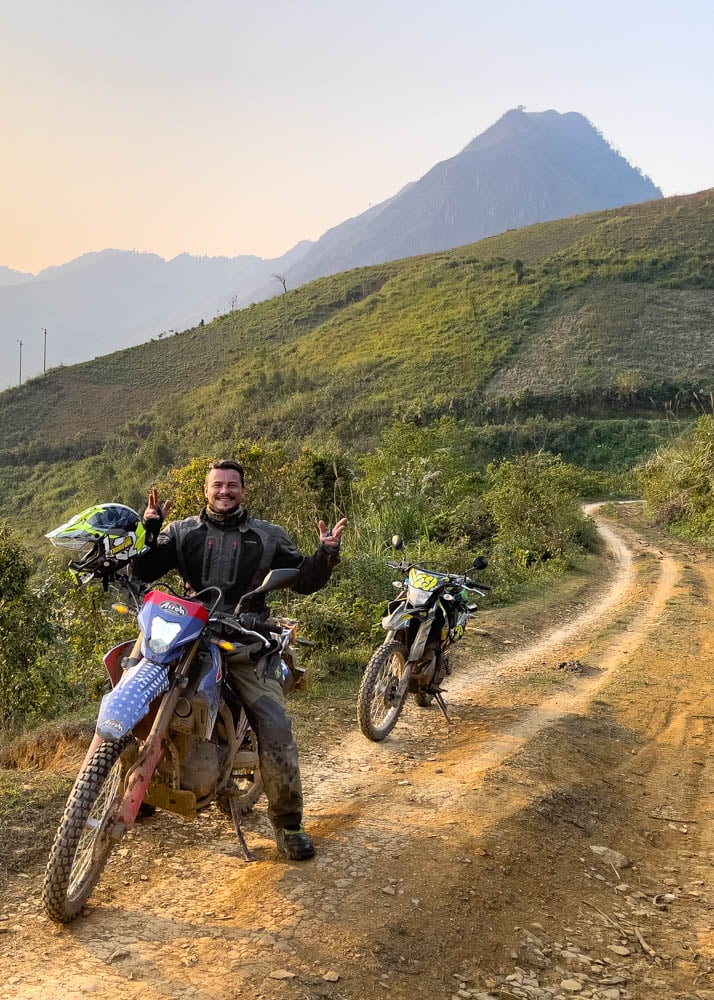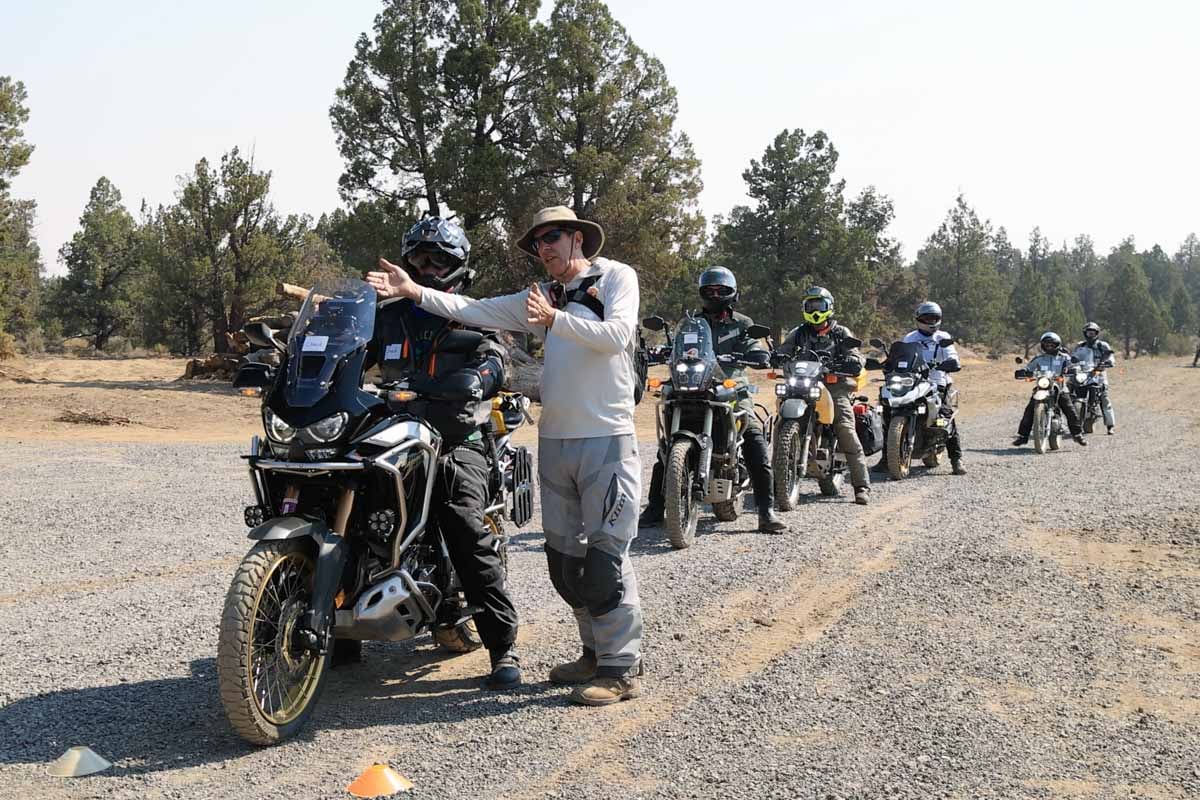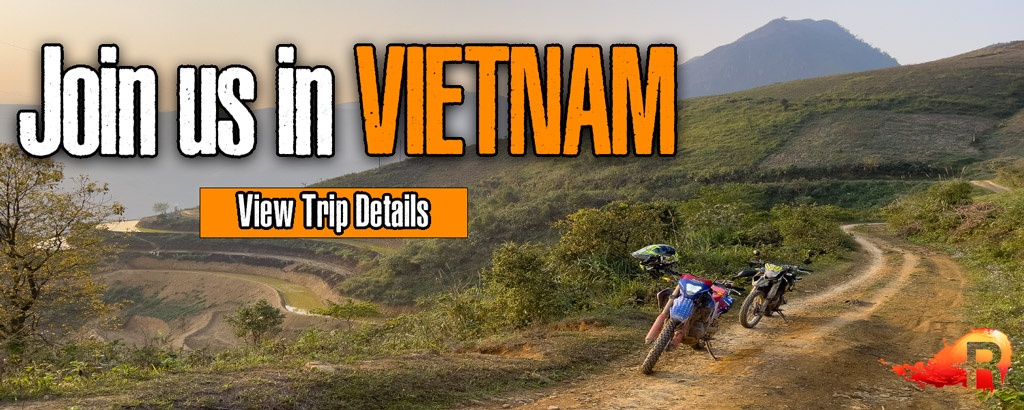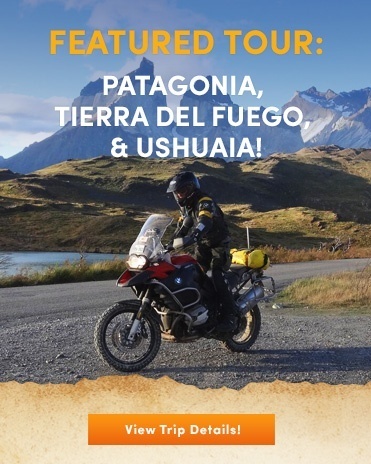 Disclosure: RIDE Adventures is a participant in the Amazon Services LLC Associates Program as well as other affiliate programs, designed to provide a means for us to earn fees by linking to Amazon and affiliated sites at no extra cost to you. Please see our Disclosure for more details.
Disclosure: RIDE Adventures is a participant in the Amazon Services LLC Associates Program as well as other affiliate programs, designed to provide a means for us to earn fees by linking to Amazon and affiliated sites at no extra cost to you. Please see our Disclosure for more details.
When you’re out on the trails, the right techniques can make the difference between an epic ride and a frustrating day of picking your bike up off the ground.
Whether you're new to adventure riding or have been tearing up the dirt for years, improving your off-road skills will help you ride further, safer, and with more confidence.
In this guide, we’re covering six essential off-road riding techniques that you can start practicing today.
These are the same skills we emphasize in our training sessions, and they’ll help you handle tough terrain, maintain better control, and have more fun on the bike.
Let’s get into it!
1. Applying Pressure to the Foot Pegs & Counterbalancing
One of the most overlooked but essential riding techniques is learning how to apply pressure to your foot pegs and use counterbalancing to maintain control.
- The more upright your bike, the more traction your tires will have. Applying pressure to the outside footpeg improves traction by shifting weight over the tire's contact patch.
- Standing on the pegs allows you to shift your center of gravity, but remember that you're constantly adjusting your weight, not just standing still. You’ll be using your hips, legs, and core to keep the bike stable.
- You don’t have to be fully standing to apply pressure! Even in a seated position, slight weight shifts on the pegs can impact your bike’s balance.
How to Practice:
Start slow. Try applying pressure to each footpeg while riding on pavement to feel how it affects your handling. Then, take it to the dirt and experiment with counterbalancing your weight against the bike’s movement.
2. Floating the Front Wheel
 "A student practices floating the front over our training course in Bend, Oregon."
"A student practices floating the front over our training course in Bend, Oregon." Whether you're crossing deep sand, navigating fresh gravel, or rolling over obstacles, knowing how to lighten your front wheel can save you from disaster.
- Throttle control is key. Adding power lifts the front wheel slightly, preventing it from digging into loose terrain like sand or deep gravel.
- Shift your weight back. Either slide back on the seat or lean back while standing to keep the front end light.
- Entering sand while decelerating is a mistake—it shifts your bike’s geometry, increasing the chance of head shake or losing control.
How to Practice:
Find a small obstacle, like a log or a patch of thick sand. Work on lifting the front wheel just enough to glide over it. Gradually increase your speed and get comfortable with this technique in different terrain conditions.
3. Slipping the Clutch
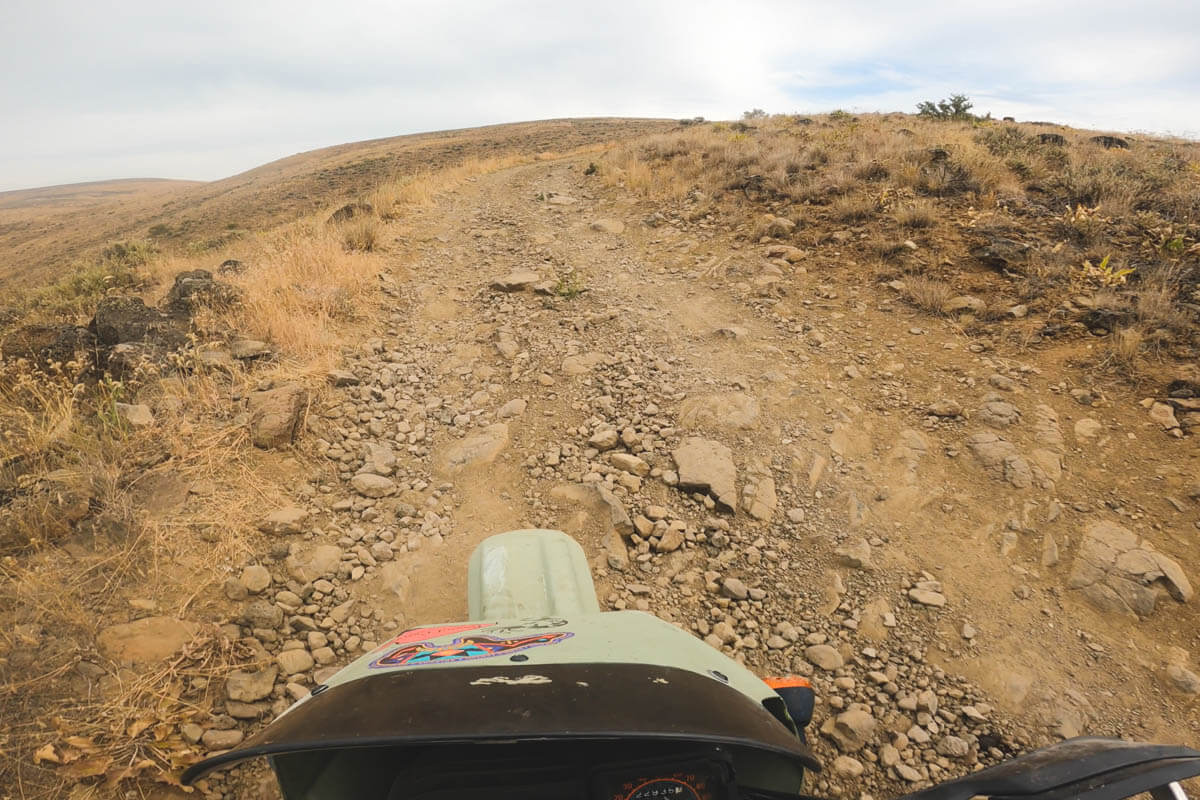 "Learning to finesse the clutch effectively will help get you through slow technical sections like these."
"Learning to finesse the clutch effectively will help get you through slow technical sections like these."Mastering clutch control is a game-changer for off-road riding. It helps you modulate power, control speed in slow sections, and even get unstuck from tricky spots.
- Need to go slower than first gear? Slipping the clutch lets you fine-tune your speed without stalling.
- Add power on demand. If you're in a gear that's too high, a quick slip of the clutch can give you an instant burst of power.
- It’s crucial for hill starts. On steep inclines, you’ll often need to slip the clutch longer than usual to prevent stalling and maintain traction.
How to Practice:
Ride at slow speeds in a parking lot or open dirt area, modulating the clutch to control your pace. Try stopping halfway up a hill and restarting smoothly using clutch control.
4. Steering with the Rear Wheel
 "Steering with the rear is an essential off-road skill, and a damn good time to boot."
"Steering with the rear is an essential off-road skill, and a damn good time to boot."Your handlebars aren’t the only way to steer—learning how to steer with the rear wheel will give you way more control in technical sections.
- Apply a burst of throttle (or slip the clutch) to break rear-wheel traction and help pivot the bike around turns.
- This technique is useful for adjusting your line mid-corner and improving corner stability in certain situations.
- The best terrain to practice on is loose gravel or light sand—somewhere the rear wheel can slip easily and consistently.
How to Practice:
Find an open area and start by riding in circles or a figure eight. Gradually add throttle at different points in the turn to kick the rear wheel out slightly. Increase the intensity as you get comfortable.
5. Looking Where You Want to Go
 "Target fixation causes a lot of crashes. You should always be looking in the direction you want to travel."
"Target fixation causes a lot of crashes. You should always be looking in the direction you want to travel."This one sounds obvious, but many riders struggle with it. Your bike follows your eyes, so where you look is where you’ll go.
- Avoid target fixation. If you stare at an obstacle, you’re likely to hit it. Instead, focus on the clear path around it.
- Turn your head through corners. Your shoulders and bike will naturally follow.
- Always scan ahead. Look at the terrain 5-10 feet in front of you for immediate obstacles, but also glance further ahead to plan your line.
How to Practice:
Next time you're riding, consciously remind yourself to scan ahead. Find an obstacle, but instead of staring at it, focus on the escape route. The more you practice, the more natural this will become.
6. Emergency Braking (On & Off Pavement)
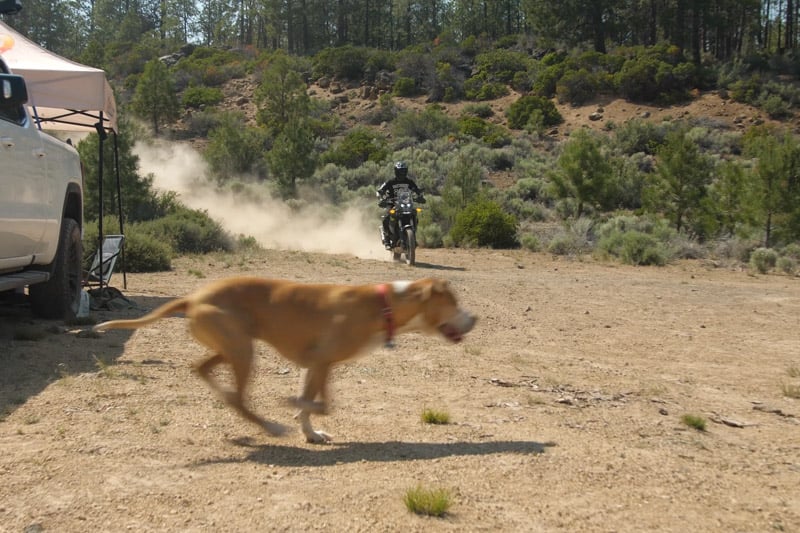 "Like any other skill, emergency braking requires practice to do effectively."
"Like any other skill, emergency braking requires practice to do effectively."Stopping quickly and safely is one of the most critical skills you can master. In both on-road and off-road situations, the front brake does most of the work, but you need the right balance to prevent losing control.
- The front brake provides most of your stopping power, but too much pressure can cause the front tire to slide.
- The rear brake helps stabilize the bike by controlling back wheel slip and adding additional stopping power.
- ABS can be a double-edged sword. On pavement, it helps prevent skidding, but in dirt, it can actually increase stopping distance—know when to turn it off.
How to Practice:
In an open area, practice stopping at different speeds using both brakes. Try it with ABS on and off to understand how your bike reacts in different conditions.
Final Thoughts: Keep Practicing & Keep Riding
These six techniques aren’t just for new riders—they’re fundamental skills that even experienced adventure riders refine over time. The more you practice, the more second nature they’ll become, helping you stay in control and ride with confidence.
 "Eric instructs on body position at one of our adventure training classes"
"Eric instructs on body position at one of our adventure training classes"Is there a technique you’d like us to dive deeper into? Let us know in the comments! And if you found this guide helpful, share it with your fellow riders. Ride safe, and see you on the trails!
→Read More:
Street & ADV Motorcycle Training
Parking A Motorcycle: 6 Rookie Mistakes to Avoid
7 Best Enduro Motorcycles in 2025

